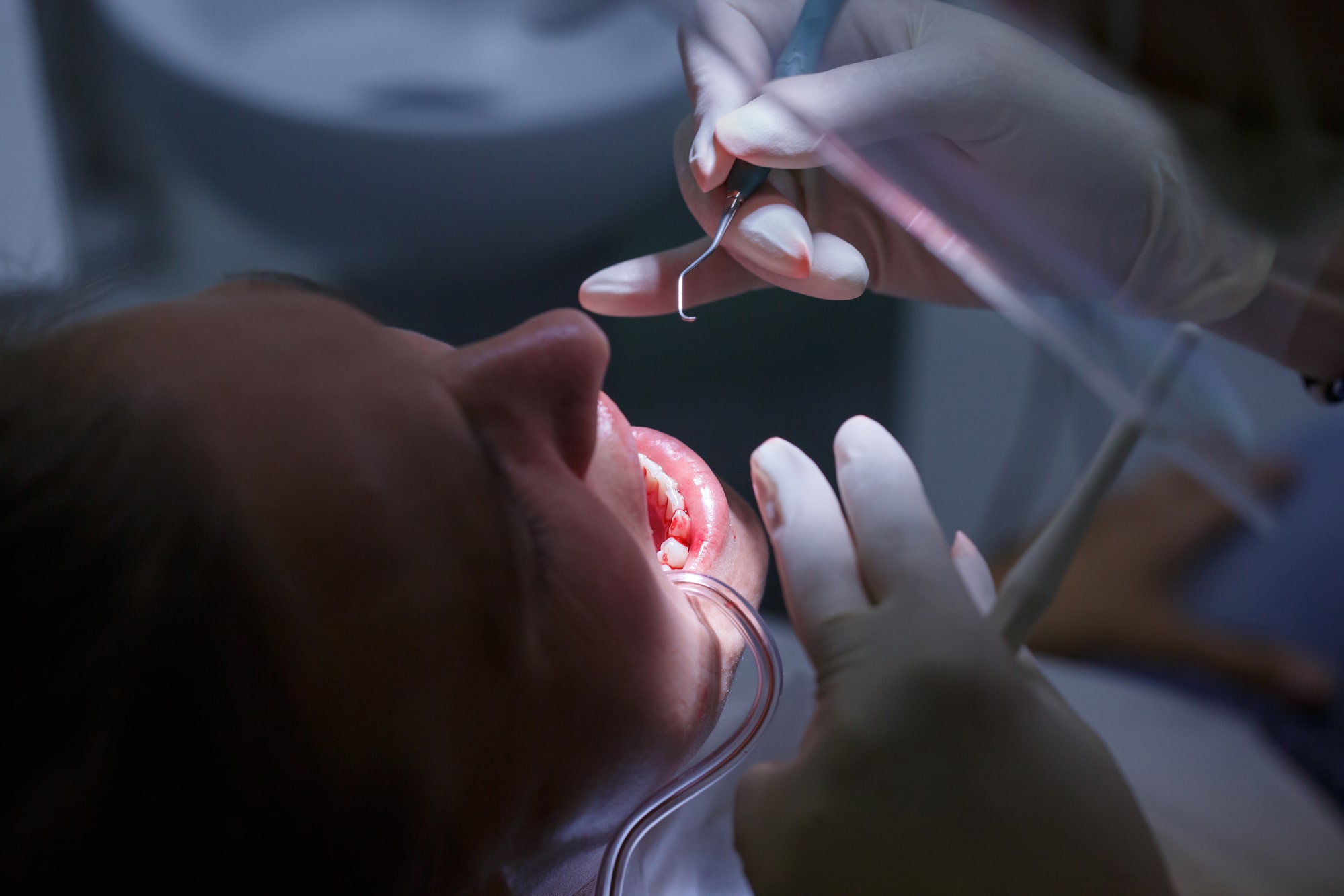
Periodontics is a branch in dentistry that deals with diagnosing, treating and preventing periodontal diseases. Experts in this field are called periodontists who treat the periodontal diseases and are familiar with the latest technology of treating periodontal diseases. People with severe gum diseases may need special periodontal treatment.
At Dental Singapore, we treat patients with serious gum diseases and complex medical histories. During your first visit, the dentist will check how much the gum has been affected and check if there are any loose teeth. The dentist will measure the space between teeth if any to see the size of the periodontal pockets. X-rays may be taken to check the health of the inside of the jawbone.
There is a close relationship between periodontal diseases and aging. However, diseases can be treated and prevented.
Our Periodontics Dental Services
Deep Gum Cleaning
This is a non-surgical deep cleaning procedure. The cleaning aims at removing tartar and plaque from the gum line. You are kept under local anesthesia while this is happening. Any rough spots on the gum are smoothened or removed because they cause a good ground for bacterial growth. A clean surface is free from bacterial growth and this will prevent periodontal diseases from occurring.
Plaque is a sticky film consisting of bacteria and forms on your teeth. The plaque cannot be removed by regular brushing. This is why you need to visit a dentist for deep gum cleaning. If left unremoved, it can lead to gum diseases and loss of teeth and jawbone. If you notice gum disease symptoms, it is important to see a dentist quickly for medication. Unattended gum diseases can lead to complex oral health issues.
You may experience pain during the first few days and teeth sensitivity for at most 7 days. You may experience swollen gums and bleed. Your dentist will give anti-inflammatory pills, antibiotics, and inserting medicine to prevent further infection.
Surgical Gum Cleaning
This is a deep gum cleaning that aims at cleaning the infected gums. The cleaning removes bacteria and pus from the gum pockets. The accessing of the pocket gums will need a surgical procedure to remove the pus and the bacteria. The surgery involves opening the gum tissues to access the periodontal pockets and to clean them.
If the dentist notices any area that needs repair, the loose bones and jaws can be repaired by stitches. The dentist uses surgical tools to create tiny openings on the gum. These spaces will be used to remove pus and bacteria from deep pockets. If the gum has been deeply damaged, the dentist can consider grafting tissue to the gum to strengthen it. The new tissue is given time to heal ad grow as a strong and healthy jawbone. All these surgical procedures are done under local anesthesia.
Crown Lengthening
Crown and teeth caps are used to fit over a tooth to make it appear natural. A crown is useful when a tooth is broken, cracked, or irregular. A crown can be used to complete dental treatment procedures of root canals, dental implants, and bridges.
Dental surgeons can perform crown lengthening by realigning the gum tissue to expose more tooth. This procedure takes at most an hour. This process is significant because it helps people to have better oral hygiene. The crown can lengthen if the gums are visible when smiling above the teeth. The process is done to make sure the crown fits on the tooth comfortably.
Before this surgery is done, further assessments will be done such as checking your medical history and doing X-rays. Crown lengthening is an outpatient process and the time taken will depend on how many teeth have been affected. The crowns are removed and replaced at the end of the procedure. You may receive a sedative and local anesthesia. This is to numb the gums to make sure that you do not feel pain during the process. After the procedure, you will be given painkillers and antibiotics to manage pain and prevent any further infection.
Gum Grafting for Recession
Gum grafting is a solution to receding gums. This helps to strengthen the gums and to give you a beautiful smile. Gum recession is the process where the gum pulls away from the teeth making them more exposed. It can lead to having loose teeth because they lack enough support from the jaw. The exposed tooth looks ugly and increases tooth sensitivity, which makes you feel uncomfortable when eating hot or cold foods.
If the gum recession is not treated, you may lose your teeth. To repair this problem, a gum graft is highly recommended. During the grafting process, you can expect connective-tissue grafts, free gingival grafts, and pedicle grafts. Different grafting work for different people. Your dentist will be able to tell the one that will work for you. Gum tissue grafts help to protect the teeth from falling and strengthen your gums.
Bone Grafting
Bone grafting is a surgical procedure to fix joints and bone problems. Joints can be damaged due to accidents or diseases. A bone graft replaces a missing joint or strengthens the existing bone. A living bone can regrow once stimulated.
The surgeon will normally take a bone from a different part of your body. The bone is used as a grafting material and is grafted on the jawbone. The healing process takes several months before the graft can create a strong, new bone. Bone grafting can happen before dental implant if your jawbone is not strong enough. After the grafting is successful, a dental implant can be done.
You will need assessment and lab testing to verify that you need bone grafting. This is important to make sure you get the right treatment procedure.
Visit us at Dental Singapore for dental checkups and assessment. Even when you are in good health, you need checkups, at least you should visit a dentist twice a year.
